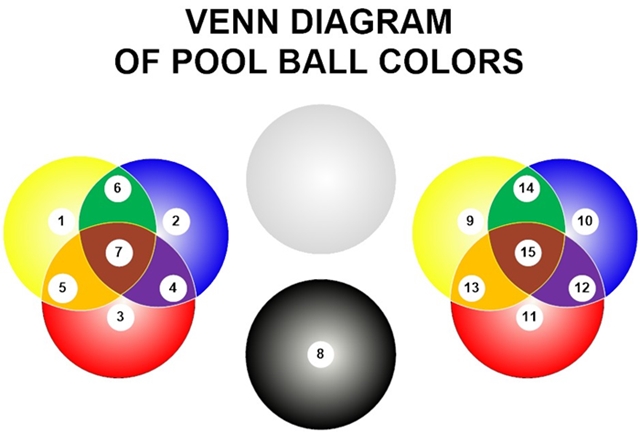Is there any rationale behind the choices for pool balls?
Every “solid” (balls 1-7) have a different color, and every “stripe” (balls 9-15) uses the same color as the corresponding “solid” (e.g., the 1-ball and 9-ball are both yellow). If you add 8 to a solid number, you get the corresponding stripe number of the same color.
If you arrange the balls in an 8-ball rack in a methodical way in color groupings, all sorts of numerical consistencies also arise. For more info, see: “Ball Colors and Numbers” (BD, May, 2017).
See also: justifications for other color schemes created by Aramith.
from Patrick Johnson (in AZB post):
Pool Ball Colors Logic:
Primary colors (no mixing): 1/9, 2/10, 3/11
Secondary colors (2 primaries mixed): 4/12, 5/13, 6/14
Tertiary color (secondary & primary mixed): 7/15
No color (black): 8
All colors (white): cue ball

When playing 8-ball, are stripes a better choice than solids, assuming both sets are equally easy to run out?
Yes. The stripes are brighter (due to the white) and have more features on them to help visualize contact points and lines of aim. Also, if the white part is on the side of the ball, it is much easier to see the edge (due to good contrast with the surroundings).
In general, the yellow, orange and red balls (especially stripes) are better since they are the brightest and have the most contrast with most cloth colors, especially when the lighting is not very good.
The darker-colored balls (especially the 8) have the least contrast and are toughest to aim, especially thin cuts where the lighting is not very good.
Dr. Dave keeps this site commercial free, with no ads. If you appreciate the free resources, please consider making a one-time or monthly donation to show your support:
